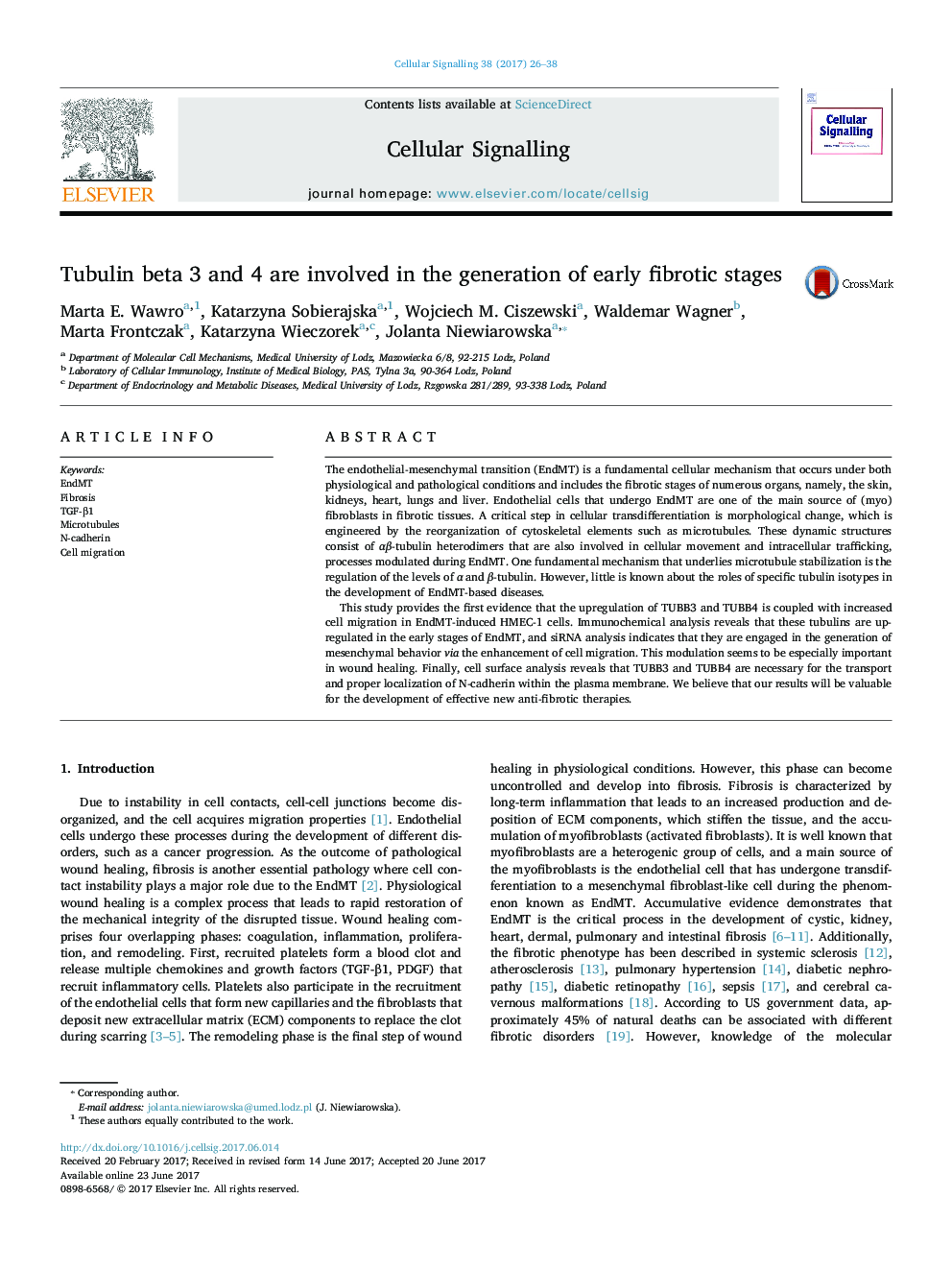| کد مقاله | کد نشریه | سال انتشار | مقاله انگلیسی | نسخه تمام متن |
|---|---|---|---|---|
| 5509316 | 1538506 | 2017 | 13 صفحه PDF | دانلود رایگان |
- TUBB3 and TUBB4 upregulation were observed in TGF-β1-stimulated and Snail-transfected cells.
- TUBB3 and TUBB4 are functionally linked to modulation of wound healing properties of EndMT induced cells.
- TUBB3 and TUBB4 in microtubules are critical for proper N-cadherin localization in the cell membrane of EndMT induced cells.
The endothelial-mesenchymal transition (EndMT) is a fundamental cellular mechanism that occurs under both physiological and pathological conditions and includes the fibrotic stages of numerous organs, namely, the skin, kidneys, heart, lungs and liver. Endothelial cells that undergo EndMT are one of the main source of (myo)fibroblasts in fibrotic tissues. A critical step in cellular transdifferentiation is morphological change, which is engineered by the reorganization of cytoskeletal elements such as microtubules. These dynamic structures consist of αβ-tubulin heterodimers that are also involved in cellular movement and intracellular trafficking, processes modulated during EndMT. One fundamental mechanism that underlies microtubule stabilization is the regulation of the levels of α and β-tubulin. However, little is known about the roles of specific tubulin isotypes in the development of EndMT-based diseases.This study provides the first evidence that the upregulation of TUBB3 and TUBB4 is coupled with increased cell migration in EndMT-induced HMEC-1 cells. Immunochemical analysis reveals that these tubulins are upregulated in the early stages of EndMT, and siRNA analysis indicates that they are engaged in the generation of mesenchymal behavior via the enhancement of cell migration. This modulation seems to be especially important in wound healing. Finally, cell surface analysis reveals that TUBB3 and TUBB4 are necessary for the transport and proper localization of N-cadherin within the plasma membrane. We believe that our results will be valuable for the development of effective new anti-fibrotic therapies.
139
Journal: Cellular Signalling - Volume 38, October 2017, Pages 26-38
